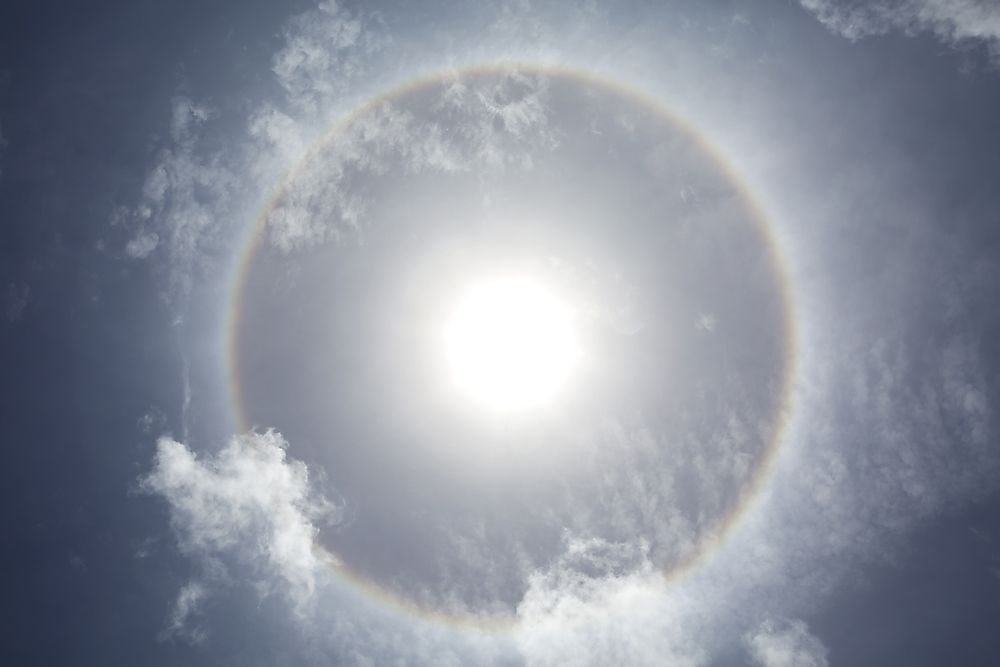What Factors Cause A False Sunrise?

During a false sunrise, the sun is seen as having risen although it is still below the horizon. Several atmospheric conditions are blamed for this phenomenon, and they all divert the sunlight which allow it to reach the eye of the observer who gets the impression that the light originates from the Sun. The spread of light can deceitfully resemble a true sun. The phrase “false sunrise” should not be used interchangeably with “false dawn” which is sometimes used to denote the zodiacal light. The atmospheric phenomena that qualify as a “false sunrise” are:
Novaya Zemlya Effect
This polar mirage results from the sunlight's high refraction between atmospheric thermoclines. The mirage causes the sun to appear earlier than it usually rises and it projects the sun as a square or a line consisting of flattened hourglass shapes depending on the meteorological situation. The effect needs rays of sunlight to possess an inversion layer for hundreds of kilometers, and it further relies on the temperature gradient of the inversion layer. The sunlight should bend to the curvature of the Earth at a minimum of 400 km to enable an elevation rise of five degrees for the appearance of the sun disk. The initial record of the phenomena was made by Gerrit de Veer who was among the members of Willem Barentsz's 3rd expedition made to the north polar region between 1596 to 1597. The expedition was forced to seek shelter in a makeshift lodge situated on the Novaya Zemlya archipelago after they were trapped by ice during winter. De Veer and another member told the rest that they had observed the sun above the horizon on January 24, 1597, but the crew regarded this claim with disbelief as it was two weeks before the sun's calculated appearance. This account was not accepted by the scientific community until it was proven in the 20th century.
Ice Crystal Halo
False sunrises can result from a kind of crystal halo including an upper sun pillar or an upper tangent arc. Tangent arcs can appear either above or underneath the sun tangent to the 22 degrees halo. The elevation of the sun determines what shape an upper tangent arc will assume. When the sun is less than 29 to 32 degrees in elevation, the phenomena is observed as an arc above the sun forming a sharp angle. The arc's curved wings lower towards the 22 degrees halo while slowly becoming longer as the sun rises. As the sun's elevation rises over 29 to 32 degrees, the upper tangent arc merges with the lower one to create the circumscribed halo. Sun pillars appear as vertical rays of light below or above the sun. The upper sun pillar is mostly the one that is visible, and it bears almost the same color and diameter as the sun. Sun pillars need ice crystals to form which oscillate around their vertical axis, and snow crystals can also form them. The color of sun-pillars will change from orange white to red-orange.











